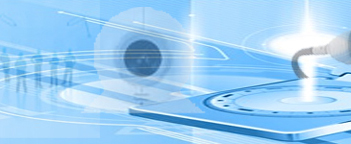1. Organize a committee
Nurse call systems today are more flexible than ever. Interfaces to systems like pocket pagers, wireless telephones, ADT, medical equipment, etc. are now common. Because of these interface options, you will need to put together a group made up of many departments including nursing, information systems, biomed, telecom, your architect, facility planning and others.
2. Evaluate your needs
Whether you are replacing your nurse call due to new construction or your existing system may be outdated, you will need to identify your requirements for the new system.
Some common requirements:
- Reduce noise - This has been at the top of patient satisfaction surveys. Overhead paging is not the answer.
- Decrease call light response times - We see too often calls going unanswered at the nurse station. Unit secretaries have more to do now than ever. Calls need to be answered quickly and response times decreased. All of which improve patient satisfaction.
- Eliminate unnecessary steps for staff - Provide staff with more information and empower them to communicate with each other and with support areas of the facility, i.e. Pharmacy, lab, dietary.
- Flexibility - The nurse call system must be able to adapt to the facility's way of patient care as your care models change. The system must also adapt to emerging technology. This adaptability will protect your investment.
Other considerations when evaluating your needs should be geography.
- If this is a new construction project, you should walk through the layout with your architect to ensure that you have the correct call devices in the correct locations.
- Do you need Code Call stations, Staff Assist stations, Code Pink Stations?
- Where are staff/duty station going to be located? Single or dual patient stations? TV and/or lighting control?
3. Explore Technology
Modern nurse call systems have come a long way since the "push a button and light a light" systems of the 70's and 80's.
Here is a list of common interfaces to call systems:
Pocket Page - Indication of calls can be routed to staff pocket pagers. Calls will appear in plain English (i.e. Patient Normal Room 1011). The system can route these calls to the specific caregiver assigned to a patient. If a call goes unanswered, it can alert alternate caregivers via pager. The system can be setup to route calls automatically if there is no unit secretary on duty or calls can be answered at the nurse station and then a pager message can be sent out.
Wireless Telephones - Several companies (SpectraLink, Nortel, NEC & Ascom) make in-building wireless telephones. Unlike cell phones, these in-building wireless telephones don't charge for airtime (you own the system) and don't interfere with medical equipment. They are safe for hospitals and they connect to your hospital's telephone system (you will need to get your Telecom department involved). The telephones can be restricted just like any other phone and have the same features as the standard wall you use today. These telephones have LCD displays and can integrate with the nurse call system like a pager to display calls. In addition to the pager-like features, these telephones allow staff to answer patient call lights. Here's how it works: A patient places a call, the dome light above the door illuminates, the call appears at the nurses' station, the call automatically rings the telephone of the caregiver(s) assigned to that room. The caregiver reads the display and presses a key(s) and is connected through the nurse call system to the patient.
HL7 ADT Interface - Thanks to a new medical data language standard called HL7 (Health Level 7),nurse call systems can access patient demographic information such as patient name, medical record #, physician name, etc. When patient calls appear at the nurses station, the patient's name and other information will also appear. This provides more information to the unit secretary and allows for a more personal level of communications.
Infrared Location - To aide in the location of and communication with staff, nurse call suppliers have developed a system that uses small infrared badges that send a unique infrared signal to sensors in each room. The system knows which badge is in which room and displays the information on the nurse call system. As staff walk in and out of patient rooms, the system will automatically light colored dome lights above the door to indicate the level of staff present. The system can even automatically clear a normal patient call when the appropriate staff member enters the room.
Management Reports - Each event that occurs in a nurse call system can be logged into a management report system. This information can be displayed in a detailed report showing call activity for an individual patient, unit, or the whole facility. This information can be archived for access at a later date.
Auxiliary Inputs - Most nurse call systems have the ability to take alarm outputs from some medical equipment such as IV drip monitors, bed exit devices, pulse oxymiters, etc. The medical equipment must have an auxiliary alarm output (looks like a phono plug) that is plugged into an auxiliary nurse call device. When the equipment alarms, the nurse call also alarms. The alarm can alert caregivers via the nurse call master station, wireless telephone and/or pager. Alarms are logged and archived if management reports are installed.
Visit nurse call suppliers web sites. A lot of preliminary information can be gathered
|


